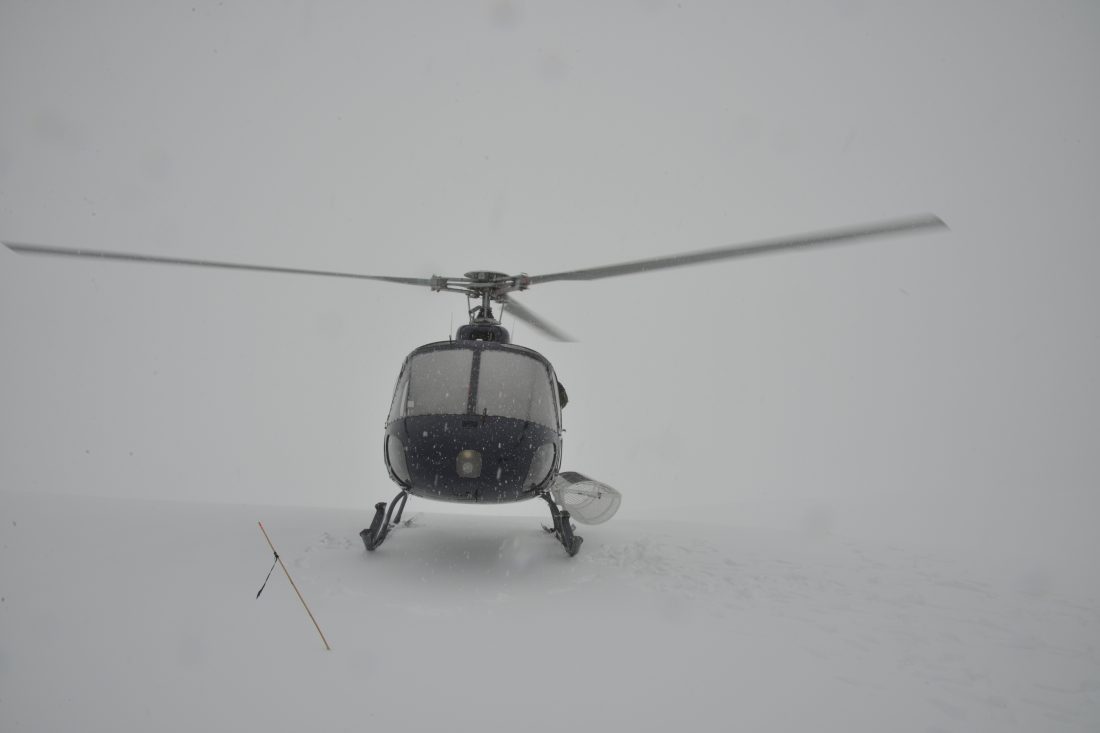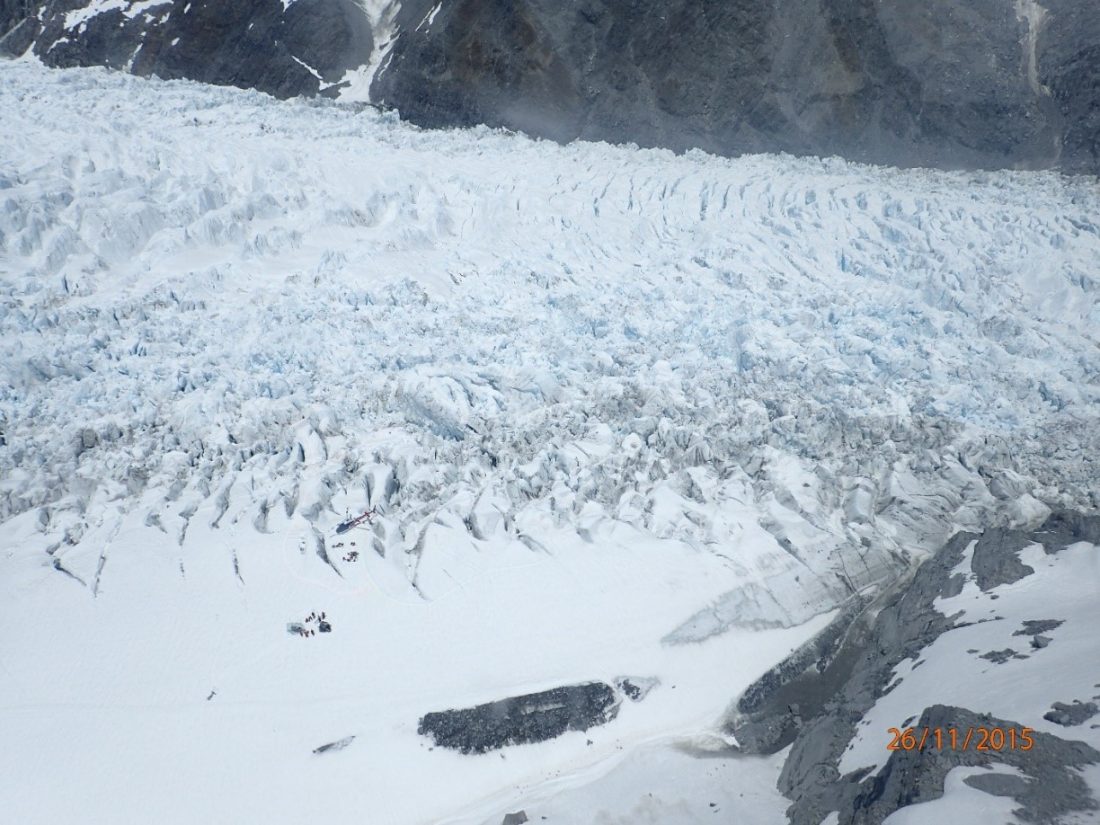
A damning report has revealed deficiencies by the New Zealand Civil Aviation Authority (CAA) in oversight of a helicopter operation involved in the fatal crash of an AS350 Eurocopter, including the fact the pilot was not adequately trained for his role.
The pilot died along with six tourists when the helicopter dived into a deep crevasse on Fox Glacier .
The New Zealand Transport Accident Investigation Commission (TAIC) report, released on Thursday, said that it was unlikely a mechanical fault caused the crash on November 21 2015 on the West Coast of New Zealand’s South Island.
The report pointed to the pilot’s inadequate training, unsuitable weather conditions, the overall weight of the helicopter almost certainly exceeding the maximum permitted weight, and shortcomings of the CAA’s oversight of flight operators as factors that resulted in one of the New Zealand’s worst helicopter crashes.
The CAA accepted that it did not do enough to secure the safety of the operator, had a poor safety culture, and had significant shortcomings in its management of its systems leading up to the crash.
The 28-year-old Queenstown pilot, Mitchell Paul Gameren, and four British and two Australian tourists were killed when the single-engine Squirrel helicopter hit the glacier at “high forward speed and a high rate of descent, with the engine delivering power” after taking off Chancellor Shelf above the glacier in cloudy weather on a day other operators had chosen not to fly.
TAIC chief commissioner Jane Meares told a media conference on Thursday that it was clear the CAA had “a systemic problem of letting faults slide”.
The investigation into the incident had identified significant non-compliance issues with the operator’s training system and managerial oversight that had warranted intervention long before this accident occurred, Meares said.
She said in 2014 TAIC had recommended the Director of Civil Aviation place stricter requirements on holders of air operator certificates to correct identified deficiencies, and that when serious safety issues were found, they always resulted in audit findings.

CAA chairman Nigel Gould told reporters on Thursday that non-compliance by operators had not always been formerly reported as findings.
“Inspectors were also too trusting and didn’t verify the information that was being given to them,” Gould said.
“Our oversight should have been better. If it was we would have placed more pressure on the operator to lift their safety performance.
“New Zealand has around 900 helicopters, the biggest fleet per capita in the world, but Civil Aviation has struggled to find skilled inspectors, putting pressure on staff.”
Gould said that at the time of the crash the safety watchdog had only two inspectors responsible for the oversight of about 100 helicopter operators and had problems recruiting staff.
The CAA has since expanded the number of flight operations inspectors to eight and they received extra testing and training.
Meares said the TAIC was concerned there could be a wider safety issue in that other civil aviation operators from that period could have significant non-compliances that were not identified or resolved.
However, CAA director Graeme Harris said the authority was a “much more effective regulator today than it was in 2012”.
Further, as part of sweeping changes and stricter measures introduced since the crash, professional services firm PriceWaterhouseCoopers had been brought in to determine whether there were any unresolved safety issues with other operators still in the system.
“In particular I wanted to identify if there were any other ‘high risk’ operators, like JP Scott,” Harris said, referring to James Patrick Scott, then owner of the Queenstown-based Alpine Adventures that operated the helicopter that crashed on the glacier.
Harris said there were none and that a small number of operators who initially raised concerns during the PwC review had been removed from the aviation system by the CAA or had been subjected to other effective interventions that had reduced the risk they posed.
Although the cause of the crash was inconclusive, Harris said: “It does portray a confronting picture of the ineffectiveness of the CA’s regulatory oversight of the operator in the lead-up to the crash, particularly during the period 2011 to 2012.”

CAA told TAIC that inspectors initially concluded that Scott and Aviation Manual Development Limited – which looked after the helicopter company’s quality assurance and health and safety and was owned by Barry Waterland – was safe to continue flying.
However, on further investigation it found the operator had been misleading about safety-related matters.
It took both to court on charges under the Health and Safety in Employment Act.
Those charges related to points raised in TAIC’s investigation – that the pilot had not been properly trained and did not have the appropriate level of experience expected under the operator’s categorisation scheme for a senior pilot in this type of operation, and that the operator’s system for training its pilots was ill-defined and did not comply fully with the civil aviation rules.
“The operator’s training system did not have sufficient oversight by the designated senior persons, and this was a factor that allowed the pilot to be assigned roles and responsibilities without the proper training and experience,” TAIC said in its report.
Last Friday, Scott was fined NZ$64,000 (A$60,474) in the Christchurch District Court after pleading guilty to breaches of the Act.
He had earlier paid reparations of NZ$125,000 ($118,113) to each of the victim’s families.
Waterland’s company had earlier pleaded guilty to breaches but was found to have no assets so was unable to pay a fine.
Flights were suspended in May 2016, six months after the crash.
The full TAIC report on the Fox Glacier crash can be read here.
The CAA statement is here.















